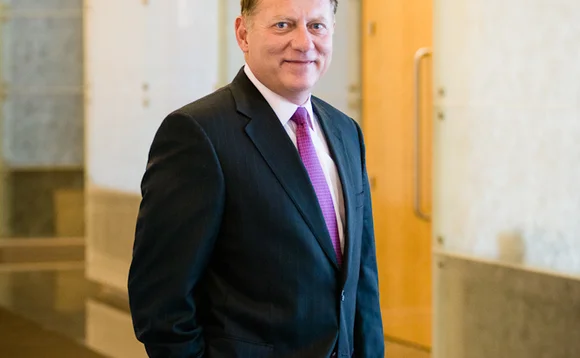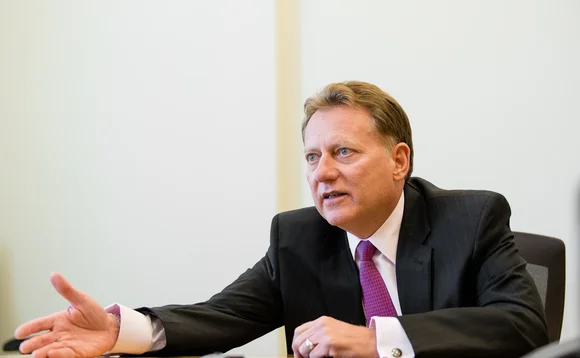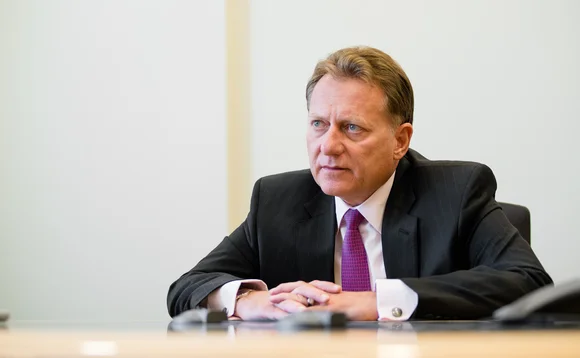Janus Capital's George Batejan: The Mechanical Engineer





George Batejan has a penchant for rearranging—he can pull the brakes and gauges and sensors out of a 1965 Ford Mustang and put it back together again. He has a talent for knowing how pieces fit together, even if that’s not the way they are laid out at the moment.
The better part of his managerial career has been spent doing to whole departments, sometimes whole institutions, what he does to engines. He arrives and immediately restructures: crankshaft here, cylinders and sparkplugs there. Pull it apart and put it back together, more efficient than before. Get the pistons pumping and the machine optimized.
A race car driver first and a mechanic second, Batejan knows that races are won under the hood. The Janus Capital Group global head of technology and operations has been putting his wrench to financial institutions for almost 40 years.
“Janus, Evergreen, and Oppenheimer, were all very similar in terms of the state of affairs when I got there,” he says. “They weren’t structured properly, in my opinion.”
It started early for Batejan, before he even held a position of authority. A master’s degree in industrial engineering led him to his first job Chase Manhattan Bank doing time and motion studies, on things like the effect of moving certain desks closer together for maximum efficiency. Shift things around and watch productivity increase.
“Finding a .Net programmer in Denver is not easy. Finding a .Net programmer who knows something about the fixed-income investing process is darn near impossible.” —George Batejan, Janus Capital
Natural Evolution
Through their work, his team realized that the natural evolution of their efforts to reduce manual labor was automation—a revelation in the 1970s. The group slowly morphed into an alternative technology team, one capable of delivering microcomputers and other quick solutions rather than the large mainframe systems and other time-consuming projects that the existing IT division handled.
Their first major project was to automate the money transfer area. They also developed the largest local area network (LAN) in financial services at the time. When the higher-ups at the bank caught on to the progress made by his team, they asked him to automate trade products in the same way as he had the money transfer area, only to discover, in those early days of electronification, that not all technology is transportable.
In the early 1980s he was sent to Hong Kong as CIO for Asia-Pacific. His son, now working in operational risk at Prudential in London, was born there. After five years, he came back to New York for his first taste of operations, as head of operations and technology for Chase private banking. He arranged credit cards, investment management accounts, and mortgages to wealthy clients. He managed the fixed-income trading room, facilities, and compliance. If a client called Chase’s concierge service and told them to buy a Rolls Royce and have it delivered to a hotel room in Midtown Manhattan, he bought the car and delivered it to the hotel in Midtown.
“I thought it was tremendous,” he says. “Every day you were looking at something different. Sometimes it would be technology, sometimes it would be operations, sometimes it would be compliance issues.”
Shaking Things Up
Insurance giant AIG came calling in 1994. COO Evan Greenberg had concluded that banks were ahead of insurance companies when it came to leveraging technology to grow their business and not just “account for widgets,” in Batejan’s words. Batejan was one of the bank executives he poached to improve AIG’s technology, which consisted of a good accounting platform and not much else. He eventually became global head of technology and operations for American International Underwriters, AIG’s international general insurance arm.
Greenberg was prone to assigning special projects outside of his job description and his department, a habit Batejan carried over with his own employees at Janus. “It frustrates some of my managers sometimes, from the standpoint of, ‘You should have given that to me, because that’s my area.’ In reality, everybody should be fungible to some extent. What I’m trying to develop in my leadership team is more cross-functional awareness so that my operations folks can develop a better understanding of how technology works. Right now, to the operations folks, what happens in technology is a black box. We’ve been working hard over the last few months to explain what’s in that black box, because if they understand it they can be better partners with IT,” Batejan says.
Only users who have a paid subscription or are part of a corporate subscription are able to print or copy content.
To access these options, along with all other subscription benefits, please contact info@waterstechnology.com or view our subscription options here: https://subscriptions.waterstechnology.com/subscribe
You are currently unable to print this content. Please contact info@waterstechnology.com to find out more.
You are currently unable to copy this content. Please contact info@waterstechnology.com to find out more.
Copyright Infopro Digital Limited. All rights reserved.
As outlined in our terms and conditions, https://www.infopro-digital.com/terms-and-conditions/subscriptions/ (point 2.4), printing is limited to a single copy.
If you would like to purchase additional rights please email info@waterstechnology.com
Copyright Infopro Digital Limited. All rights reserved.
You may share this content using our article tools. As outlined in our terms and conditions, https://www.infopro-digital.com/terms-and-conditions/subscriptions/ (clause 2.4), an Authorised User may only make one copy of the materials for their own personal use. You must also comply with the restrictions in clause 2.5.
If you would like to purchase additional rights please email info@waterstechnology.com
More on Emerging Technologies
As trading firms embrace AI, so do hackers
According to a Google cybersecurity report, cybercriminals are turning to AI to sharpen their attacks.
AI & data enablement: A looming reality or pipe dream?
Waters Wrap: The promise of AI and agents is massive, and real-world success stories are trickling out. But Anthony notes that firms still need to be hyper-focused on getting the data foundation correct before adding layers.
Waters Wavelength Ep. 343: Broadridge’s Jason Birmingham
This week, Jason Birmingham of Broadridge talks with Tony about the importance of fundamentals as technology rapidly evolves.
Data standardization is the ‘trust accelerator’ for broader AI adoption
In this guest column, data product managers at Fitch Solutions explain AI’s impact on credit and investment risk management.
BNY inks AI deal with Google, Broadridge moves proxy voting to AWS, Expero delivers ICE market data, and more
The Waters Cooler: TSX Venture Exchange data hits the blockchain, SmartTrade acquires Kace, and garage doors link to cloud costs in this week’s news roundup.
Everyone wants to tokenize the assets. What about the data?
The IMD Wrap: With exchanges moving market data on-chain, Wei-Shen believes there’s a need to standardize licensing agreements.
Google, CME say they’ve proved cloud can support HFT—now what?
After demonstrating in September that ultra-low-latency trading can be facilitated in the cloud, the exchange and tech giant are hoping to see barriers to entry come down.
Waters Wavelength Ep. 342: LexisNexis Risk Solutions’ Sophie Lagouanelle
This week, Sophie Lagouanelle, chief product officer for financial crime compliance at LNRS, joins the podcast to discuss trends in the space moving into 2026.






